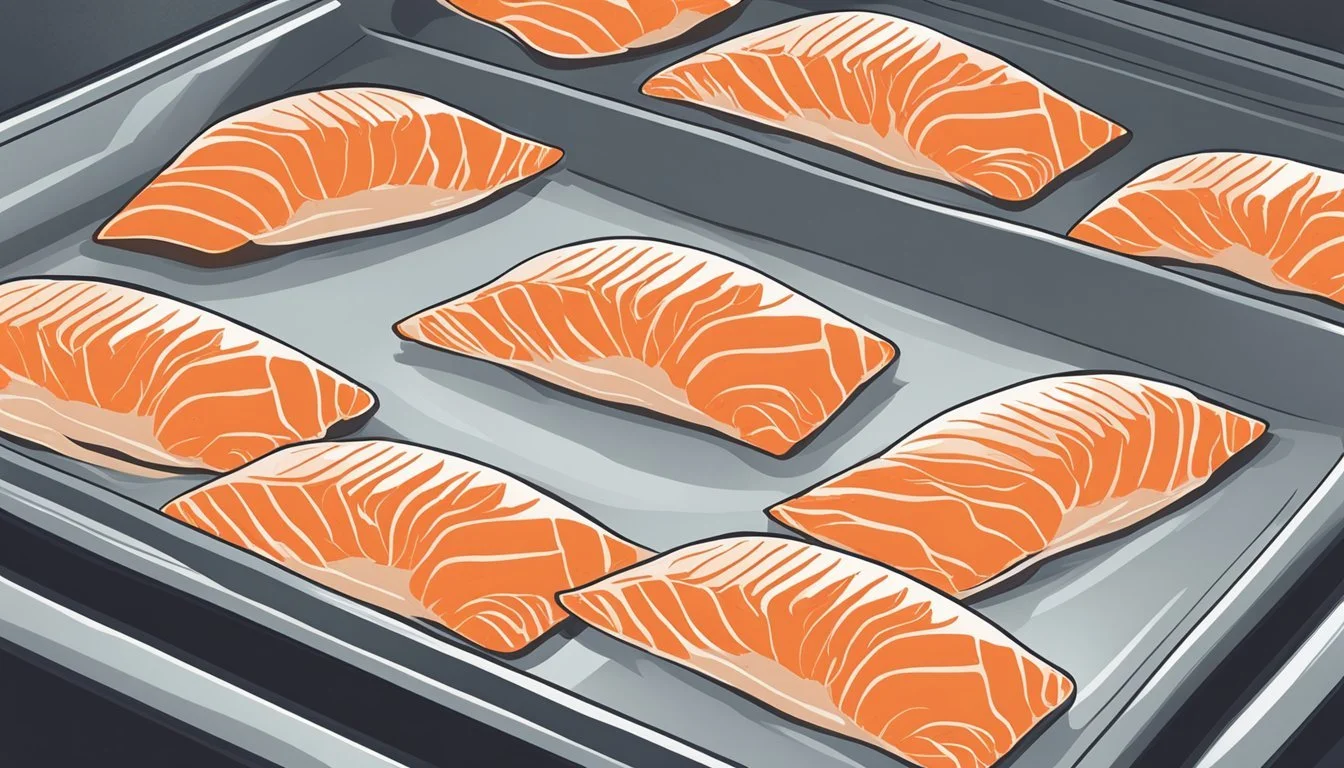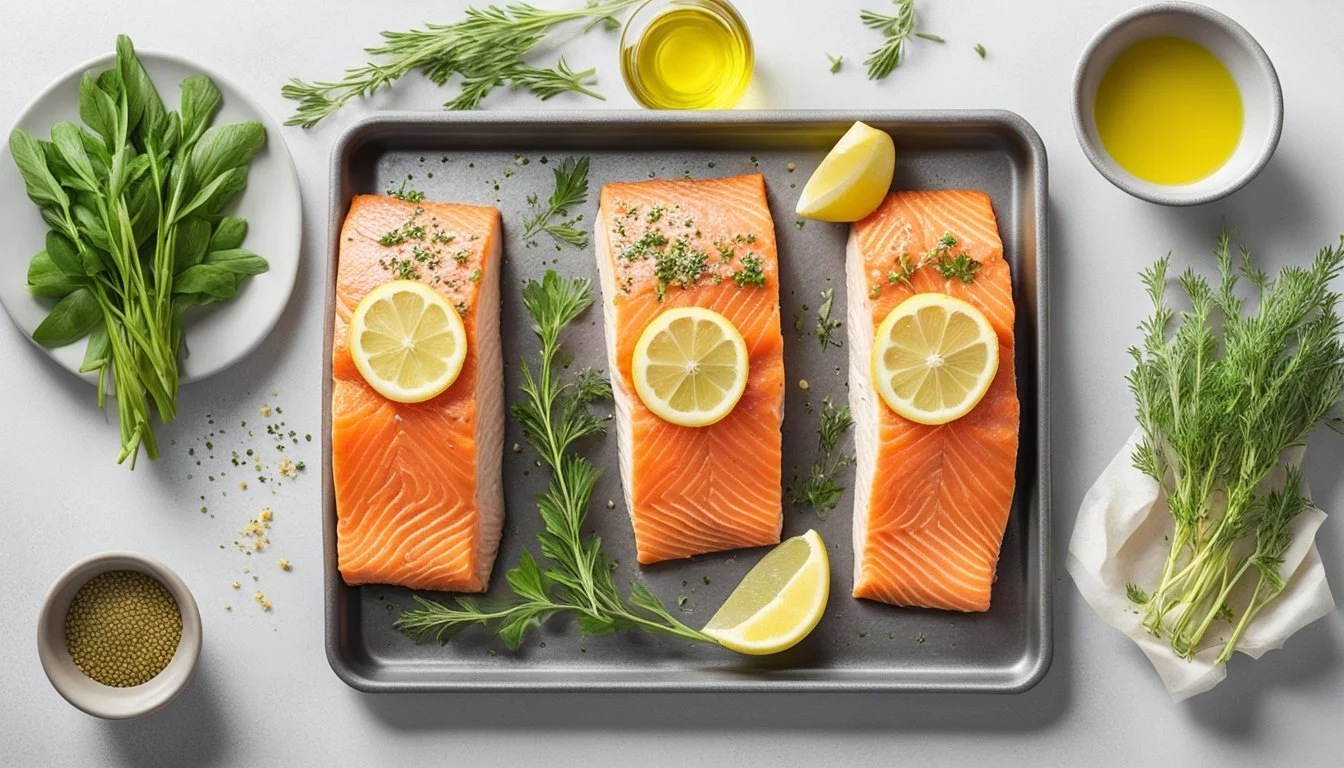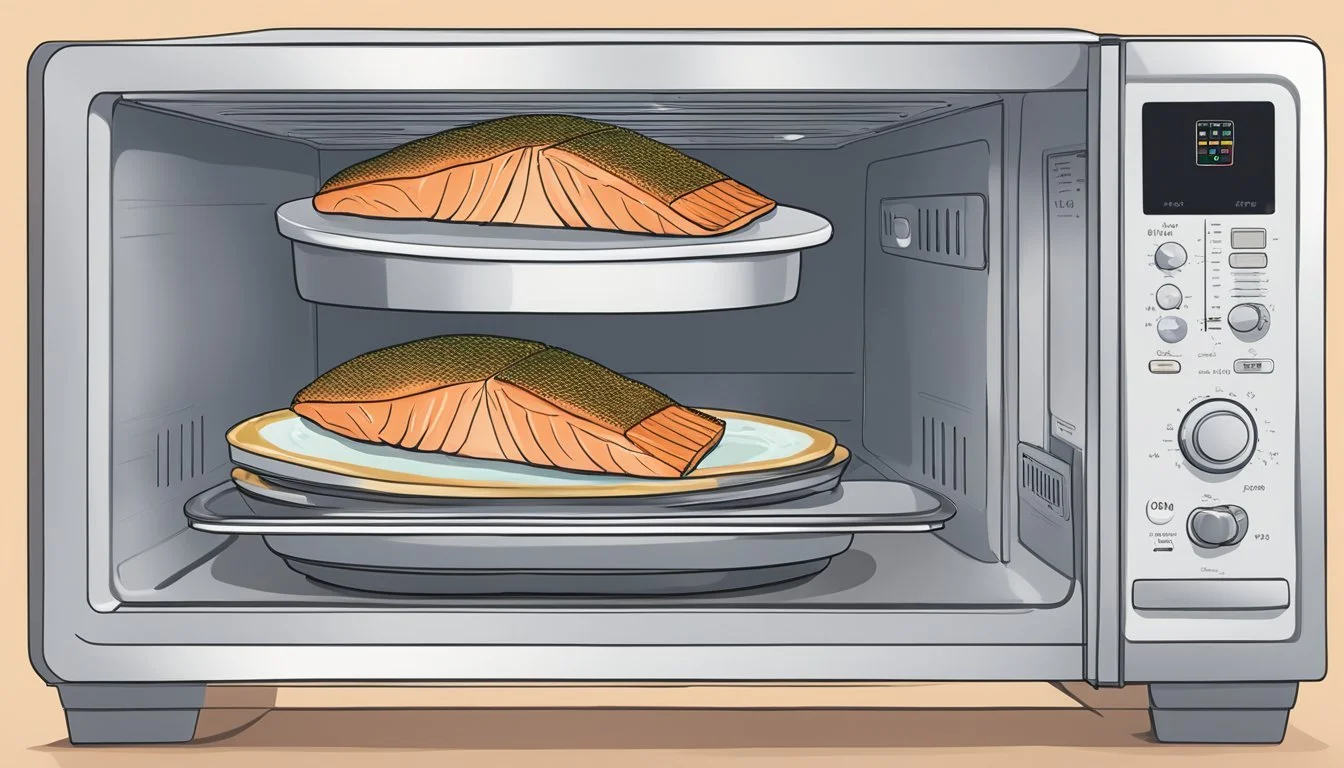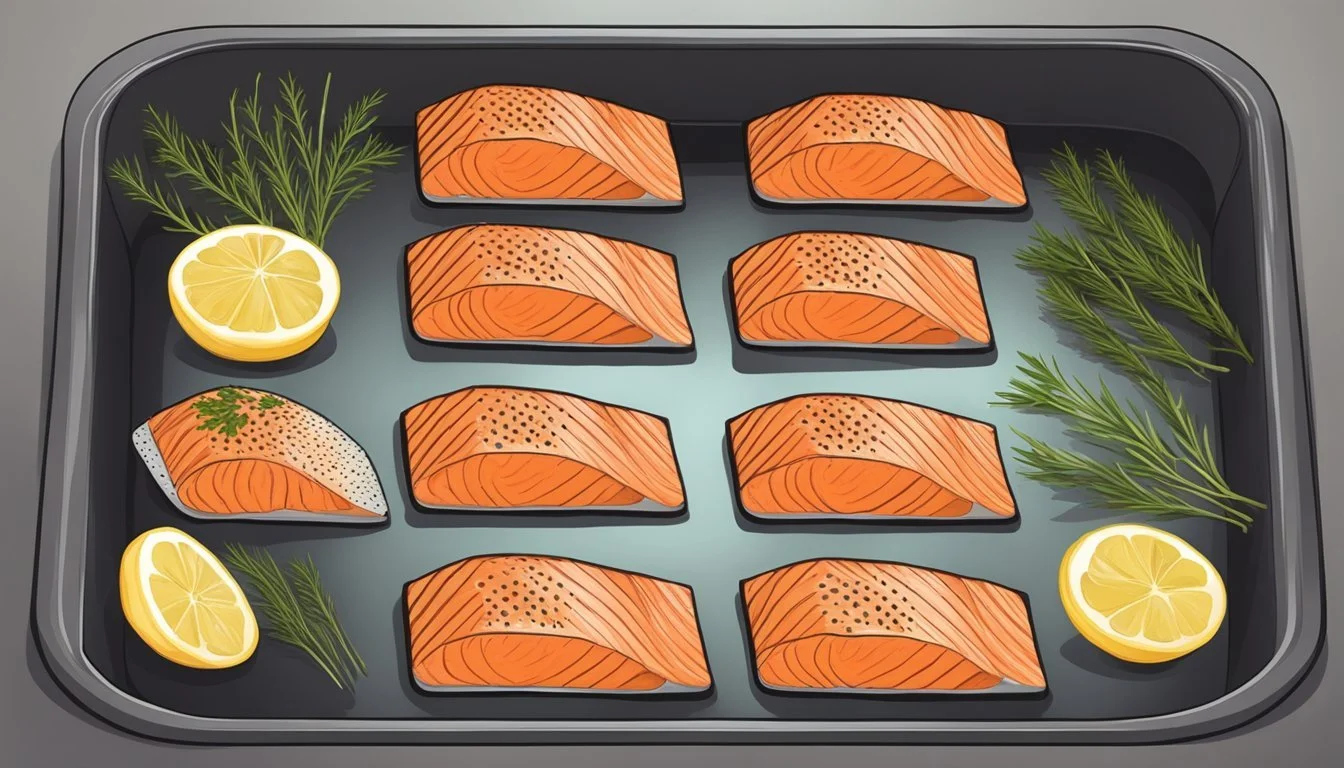How to Reheat Gluten-Free Salmon Fillets for Perfect Taste and Texture
Reheating gluten-free salmon fillets can be a bit of a challenge if you want to maintain their moisture and flavor. Fortunately, there are several effective methods to ensure your salmon stays delicious and safe to eat. Whether you prefer using an oven, a skillet, or a steamer, these techniques can help you restore your salmon fillets to their original appetizing state.
To reheat salmon fillets without drying them out, opt for gentle heating methods such as using a nonstick skillet with low heat or steaming. The key is to maintain moisture during the reheating process, which can be achieved by adding a small splash of water or a drizzle of olive oil. This not only prevents the salmon from becoming dry but also keeps the delicate flavors intact.
For those looking to use an oven, preheating it to a moderate temperature and covering the salmon with foil can ensure even heating without overdrying. Positioning the salmon on a baking sheet lined with parchment paper can prevent sticking and provide easy cleanup. These methods, when done right, will leave you with succulent, flavorful salmon that tastes just as good as when it was first cooked.
Understanding Gluten-Free Salmon Fillets
Salmon is a nutritious choice for those seeking a gluten-free meal. This section explores the health benefits of salmon and the characteristics of gluten-free cooking to enhance your culinary experience.
Health Benefits of Salmon
Salmon is renowned for its high protein content and rich concentration of omega-3 fatty acids. These fats are essential for heart health, reducing inflammation, and supporting brain function.
The fish is also low in carbs, fitting well into various diet plans, including low-carb and ketogenic diets. Fresh salmon provides vitamins like B12 and D, which are crucial for energy and immune support.
Eating salmon regularly contributes to a balanced diet, supplying essential nutrients without added gluten. It is a versatile ingredient used in many healthy recipes, making it simple to incorporate into your gluten-free meal planning.
Characteristics of Gluten-Free Cooking
Gluten-free cooking focuses on avoiding ingredients containing gluten, such as wheat, barley, and rye. Simple ingredients like fresh salmon are naturally gluten-free, making them easy to work with.
When preparing gluten-free recipes, it is essential to use gluten-free seasonings and sauces. For instance, tamari can replace traditional soy sauce due to its gluten-free properties. Using clean utensils and surfaces prevents cross-contamination.
In dairy-free recipes, substitutes like almond milk or coconut oil maintain flavor and texture. By prioritizing fresh, whole foods, gluten-free cooking can be nutritious and delicious, ensuring meals are both healthy and safe for those with gluten sensitivities.
Preparation Before Reheating
Proper preparation ensures that your gluten-free salmon fillets maintain their flavor and moisture when reheated. Key preparations include optimal storage methods and specific pre-reheating steps.
Storage Tips for Salmon
To maintain the quality of leftover salmon, store it in an airtight container in the fridge. For longer storage, freeze the salmon in a marked container, including the date.
To prevent freezer burn, wrap the fish in aluminum foil before placing it in a freezer bag. Ensuring the salmon is stored correctly from the beginning makes reheating more effective and preserves taste and texture.
Pre-Reheating Instructions
Before reheating, allow leftover salmon to reach room temperature by resting it outside the fridge for approximately 10-15 minutes. Blot the fish with a paper towel to remove excess moisture, which helps retain texture.
Preheat your oven to 275°F (135°C). Place the salmon on a baking sheet and lightly brush with olive oil or a reserved sauce. Cover loosely with foil to prevent drying. This brief prep time ensures the salmon reheats evenly without losing its desirable moisture and flavor.
Reheating Gluten-Free Salmon
Reheating gluten-free salmon correctly ensures the fish remains moist, flavorful, and safe to eat. Each method varies slightly in terms of cook time and technique but aims to prevent drying out the salmon while maintaining its texture.
Oven Method
Preheating the oven to 275 degrees Fahrenheit is recommended. Place the salmon fillets on a baking sheet lined with parchment paper. Cover the salmon with aluminum foil to retain moisture. Bake for about 15 minutes, or until the internal temperature reaches 145 degrees Fahrenheit (63 degrees Celsius).
Skin-on fillets should be placed skin side down. A drizzle of olive oil or a splash of broth helps maintain the moisture. The slow and steady heat is effective for maintaining a tender texture without drying out.
Skillet Method
Using a skillet is a quick and effective way to reheat salmon, particularly for those who enjoy a bit of a crisp on the fish. Heat a non-stick skillet over medium-high heat. Add a small amount of olive oil or butter.
Place the salmon fillets in the skillet, skin side down if applicable. Heat for about 3-4 minutes per side. For extra flavor, add minced garlic during the cooking process. Ensure each side is heated through without overcooking to keep the salmon moist and flavorful.
Microwave Method
For those in a hurry, the microwave offers a fast reheating option. Place the salmon on a microwave-safe plate. Cover it with a damp paper towel to prevent drying. Heat on medium power for 1-2 minutes, checking halfway through.
To ensure even reheating, flip the salmon halfway. This method is convenient but needs careful monitoring to avoid overcooking. Adding a splash of water or a drizzle of oil can help retain the fish’s moisture.
Air Fryer Method
The air fryer is excellent for reheating salmon while keeping a nice crunch. Preheat the air fryer to 350 degrees Fahrenheit. Place the salmon fillets in the basket, making sure not to overcrowd.
Heat for 4-5 minutes or until heated through. The circulating hot air ensures the salmon reheats evenly. This method is especially good for those who enjoy a slightly crispy exterior while maintaining a juicy interior.
Post-Reheating Care
Proper post-reheating care ensures that your gluten-free salmon fillets stay moist, flavorful, and ready to serve. Focus on checking for proper reheating and allowing the salmon to rest before serving.
Checking for Proper Reheating
After reheating, it's critical to check that the salmon has reached the correct internal temperature. Use a food thermometer to confirm the fillet is between 125°F to 145°F.
Avoid overcooking to maintain moisture and flavor. If the salmon feels dry, it might have been reheated at too high heat or for too long. Adding a bit of lemon juice can help restore some moisture and enhance flavor.
Look for visual cues like slight steaming or a glossy surface. Gently press the fillet; it should flake easily and remain moist at the center.
Resting and Serving
Once reheated, let the salmon rest for a few minutes before serving. This helps redistribute moisture throughout the fillet, preventing dryness.
Covering the salmon lightly with foil while it rests can trap steam and maintain heat. Consider garnishing with fresh herbs, a drizzle of olive oil, or a squeeze of lemon juice to brighten flavors.
Serve the salmon with appropriate sides like steamed vegetables, quinoa, or a light salad to complement its texture and taste. For an extra touch, add gluten-free sauces or dressings.
Enhancing Flavors
Boosting the taste of reheated gluten-free salmon fillets can be achieved with thoughtful seasoning and pairing with vibrant side dishes. Doing so not only brings out the richness of the salmon but also creates an enjoyable eating experience.
Seasoning and Additions
Seasoning is key to reviving the flavor of reheated salmon. Start with a sprinkle of salt and pepper, then layer on fresh or dried herbs like dill, parsley, or cilantro. A drizzle of olive oil helps lock in moisture and add a smooth texture.
Consider adding thin slices of lemon or a splash of lime juice for a zesty touch. Garlic can enhance the savory profile, whether freshly chopped or in powdered form. For a spicier kick, include a dash of chili flakes or paprika.
Brushing the salmon with reserved honey glaze or a bit of lime juice mixed with olive oil can add a sweet and tangy flavor. Experiment with combinations to find a favorite that keeps the salmon flavorful and moist.
Side Dish Recommendations
Pairing salmon with the right side dish can elevate the meal. Roasted vegetables like broccoli, asparagus, or spinach complement the richness of the fish. A fresh salad with mixed greens, cherry tomatoes, feta, and a light vinaigrette provides a refreshing contrast.
For something heartier, consider quinoa or wild rice, which offer satisfying textures and pair well with the fish. Steamed or roasted broccoli and spinach add both color and nutrients.
A simple side of grilled asparagus drizzled with olive oil, salt, and pepper is another excellent choice. These sides not only enhance the salmon’s flavor but also contribute to a balanced and delightful meal.
Additional Tips and Tricks
Reheating gluten-free salmon fillets while preserving taste and moisture requires careful attention to common pitfalls, serving sizes, pairings, and dietary needs. Use the tips below to enhance your salmon reheating process.
Avoiding Common Mistakes
To maintain moisture and flavor, avoid using high heat, which can dry out the salmon. A moderate temperature around 275°F (135°C) is ideal.
Cover the salmon with foil or plastic wrap to lock in moisture.
Adding a splash of water or broth can also help. Avoid reheating in the microwave as it tends to unevenly heat and potentially overcook the salmon.
Serving Size and Pairing
When deciding portions, consider that a typical serving size of salmon is about 4-6 ounces, which contains around 200 calories.
Pair the salmon with gluten-free sides like quinoa, roasted vegetables, or a fresh salad. Mediterranean-inspired options, such as a quinoa salad with sun-dried tomatoes and olives, work well.
Sprinkle sesame seeds for added texture and flavor.
Dietary Considerations
Salmon is naturally gluten-free and pairs easily with various dietary preferences, including keto, low-carb, and dairy-free diets.
When reheating for a vegan or dairy-free diet, use olive oil or broth instead of butter.
For those monitoring their calories, opt for steaming or baking with minimal added fats.
Focus on adding nutrient-rich sides for a balanced meal suited to various dietary needs.
Final Thoughts
Reheating gluten-free salmon fillets can be straightforward with the right methods. For any seafood recipe, maintaining the integrity of the fish is crucial.
Steaming is great for retaining moisture. A steamer or a makeshift steamer setup works well.
Oven reheating: Preheat to 275°F. Add lemon juice or olive oil to keep salmon moist. Cover with foil and heat for about 15 minutes.
Air frying: Ideal for a crispy exterior. Preheat to 350°F, brush salmon with oil, and air fry for 3-5 minutes.
Use marinades free from gluten to add flavor. Always check labels to ensure all ingredients are gluten-free.
Given these methods, reheated salmon should maintain its flavor and texture. Enjoy your reheated gluten-free salmon fillets with confidence.







